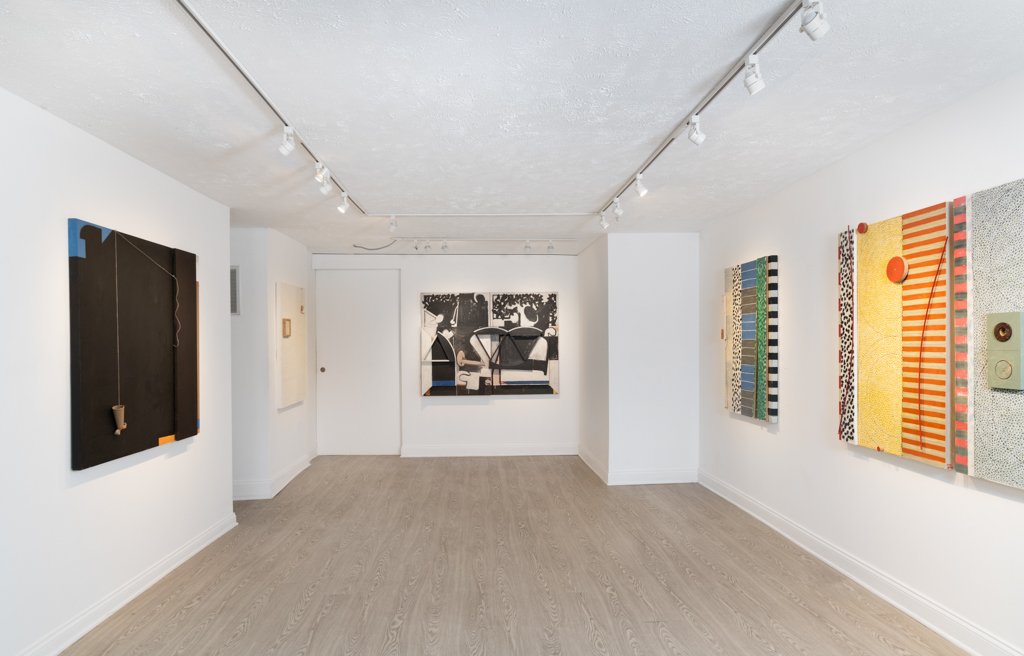Catalyst Contemporary presents Forging the Past Decoding the Present, a solo exhibition of internationally known, Maryland-based artist, James von Minor. Highlighted in both the Main and Backroom galleries, are decades worth of paintings, drawings, prints, and constructions, all of which illustrate a delicate juggling act of equilibrium, form, pigment and motifs. Through the use of geometry and a visualized abstraction of mathematics, von Minor tangibly documents his own explorations into an intuitively driven process, one with no destination, like a new world explorer looking to the edge of the horizon into the unknown.
The first works encountered in the Main gallery are von Minor’s constructions. These constructions utilize both 2D patterns - such as grids, dots, circles, and stripes - as well as 3D elements, which come together to create a collaged, formulaic expression. An example of this can be seen in Soto and Maracaibo, where additional items are attached including red wooden circles and curving strips of wooden dowels that have been bent. The vast array of von Minor’s constructions brings visual delight and joy in the way they balance objects, shapes, lines, and colors.
In the The Backroom, are featured von Minor’s works on paper. These paintings, drawings and prints address influences of architecture such as archways, doors, and markings on roadways. One such example is Segment #39. These works are less about the 3D materiality of 2D designs like in the pieces located in the Main gallery, but instead expands into the 2D realm as a whole. These pieces summon Plato’s Allegory of the Cave and our own understanding and experiences of the higher levels of reality. The characters bound into von Minor’s 2D planes exist in a mystical yet playful realm beyond our 3D understanding. It is up to us to take a crack at unlocking and discovering the roadmap left by von Minor.
The works featured in both spaces highlight von Minor’s long-term investigations, like field notes, or perhaps a coded map with no legend to interpret the terrain. On his journey to solving problems and asking questions that are not yet discovered, his works draw maps between point A and an unknown point B.















